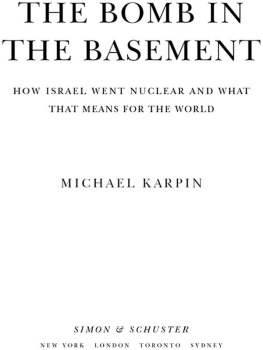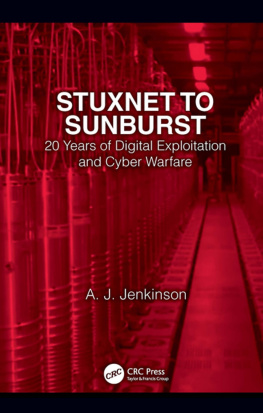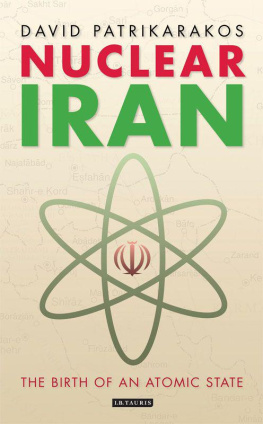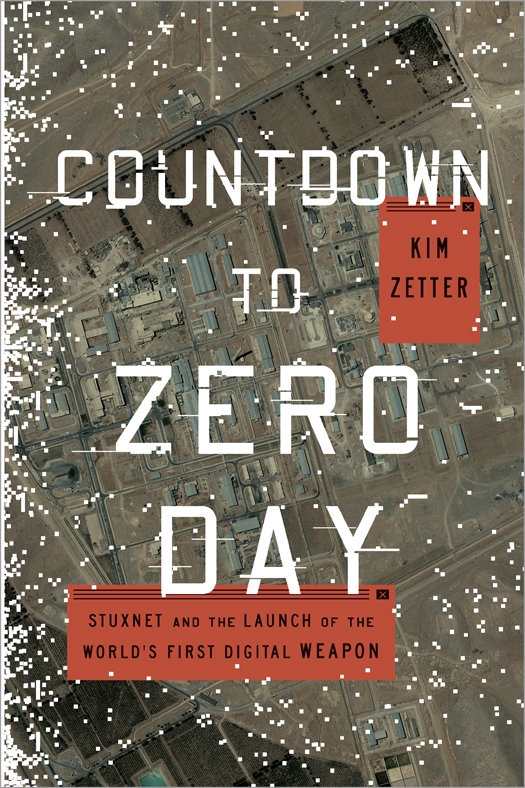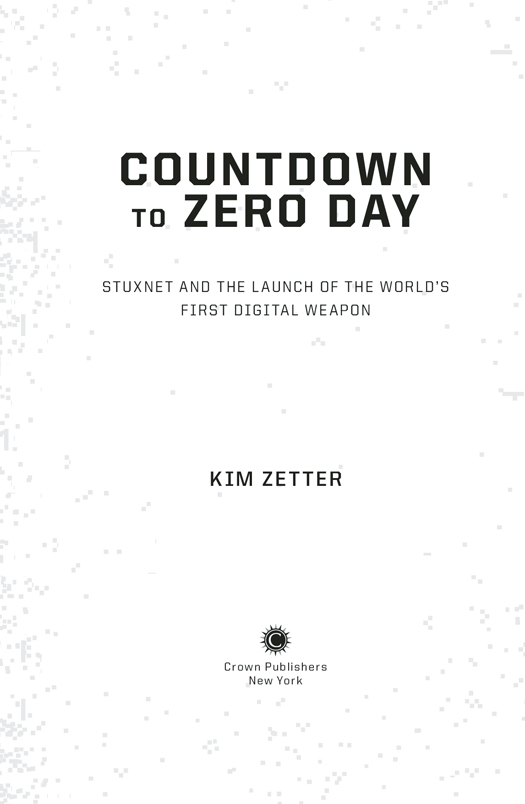Kim Zetter - Countdown to Zero Day: Stuxnet and the Launch of the Worlds First Digital Weapon
Here you can read online Kim Zetter - Countdown to Zero Day: Stuxnet and the Launch of the Worlds First Digital Weapon full text of the book (entire story) in english for free. Download pdf and epub, get meaning, cover and reviews about this ebook. year: 2014, publisher: Crown, genre: Detective and thriller. Description of the work, (preface) as well as reviews are available. Best literature library LitArk.com created for fans of good reading and offers a wide selection of genres:
Romance novel
Science fiction
Adventure
Detective
Science
History
Home and family
Prose
Art
Politics
Computer
Non-fiction
Religion
Business
Children
Humor
Choose a favorite category and find really read worthwhile books. Enjoy immersion in the world of imagination, feel the emotions of the characters or learn something new for yourself, make an fascinating discovery.

- Book:Countdown to Zero Day: Stuxnet and the Launch of the Worlds First Digital Weapon
- Author:
- Publisher:Crown
- Genre:
- Year:2014
- Rating:4 / 5
- Favourites:Add to favourites
- Your mark:
Countdown to Zero Day: Stuxnet and the Launch of the Worlds First Digital Weapon: summary, description and annotation
We offer to read an annotation, description, summary or preface (depends on what the author of the book "Countdown to Zero Day: Stuxnet and the Launch of the Worlds First Digital Weapon" wrote himself). If you haven't found the necessary information about the book — write in the comments, we will try to find it.
In January 2010, inspectors with the International Atomic Energy Agency noticed that centrifuges at an Iranian uranium enrichment plant were failing at an unprecedented rate. The cause was a complete mysteryapparently as much to the technicians replacing the centrifuges as to the inspectors observing them.
Then, five months later, a seemingly unrelated event occurred: A computer security firm in Belarus was called in to troubleshoot some computers in Iran that were crashing and rebooting repeatedly.
At first, the firms programmers believed the malicious code on the machines was a simple, routine piece of malware. But as they and other experts around the world investigated, they discovered a mysterious virus of unparalleled complexity.
They had, they soon learned, stumbled upon the worlds first digital weapon. For Stuxnet, as it came to be known, was unlike any other virus or worm built before: Rather than simply hijacking targeted computers or stealing information from them, it escaped the digital realm to wreak actual, physical destruction on a nuclear facility.
In these pages, Wired journalist Kim Zetter draws on her extensive sources and expertise to tell the story behind Stuxnets planning, execution, and discovery, covering its genesis in the corridors of Bushs White House and its unleashing on systems in Iranand telling the spectacular, unlikely tale of the security geeks who managed to unravel a sabotage campaign years in the making.
But Countdown to Zero Day ranges far beyond Stuxnet itself. Here, Zetter shows us how digital warfare developed in the US. She takes us inside todays flourishing zero-day grey markets, in which intelligence agencies and militaries pay huge sums for the malicious code they need to carry out infiltrations and attacks. She reveals just how vulnerable many of our own critical systems are to Stuxnet-like strikes, from nation-state adversaries and anonymous hackers alikeand shows us just what might happen should our infrastructure be targeted by such an attack.
Propelled by Zetters unique knowledge and access, and filled with eye-opening explanations of the technologies involved, Countdown to Zero Day is a comprehensive and prescient portrait of a world at the edge of a new kind of war.
Kim Zetter: author's other books
Who wrote Countdown to Zero Day: Stuxnet and the Launch of the Worlds First Digital Weapon? Find out the surname, the name of the author of the book and a list of all author's works by series.

